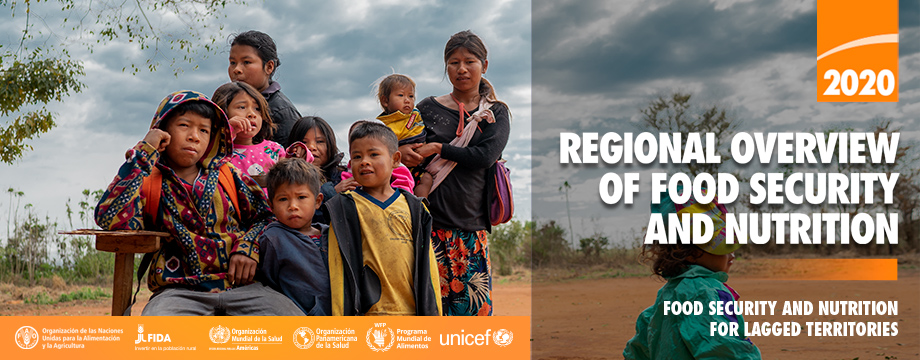Inequality in the geographical distribution of malnutrition in Latin America and the Caribbean
A new United Nations report shows the territorial inequality of malnutrition in the countries of Latin America and the Caribbean. The Regional Overview of Food and Nutrition Security in Latin America and the Caribbean 2020 (Panorama 2020) analyzes child overweight and stunting in the countries…
 A new United Nations report shows the territorial inequality of malnutrition in the countries of Latin America and the Caribbean. The Regional Overview of Food and Nutrition Security in Latin America and the Caribbean 2020 (Panorama 2020) analyzes child overweight and stunting in the countries of the region, and identifies which territories are highly lagging, that is, those that exhibit levels significantly higher than the national averages.
A new United Nations report shows the territorial inequality of malnutrition in the countries of Latin America and the Caribbean. The Regional Overview of Food and Nutrition Security in Latin America and the Caribbean 2020 (Panorama 2020) analyzes child overweight and stunting in the countries of the region, and identifies which territories are highly lagging, that is, those that exhibit levels significantly higher than the national averages.
According to the report, child overweight in the highly lagging territories of the region is twice as high as in the territories with no lag: 13.1% versus 6.6%. Stunting, meanwhile, reaches 27.6% in the territories which are highly-lagging, and only 11.9% in those with no lag.
“National averages hide territorial inequalities. In each country we have places that have reached very good standards, and others where conditions are very deleterious. It is essential that countries focus their efforts and channel resources towards their lagging territories, with solutions tailored to each one of them,” said Julio Berdegué, FAO’s Regional Representative.
One out of every five territories analyzed by the Panorama are lagging behind in both stunting and child overweight: these territories are usually rural, with high levels of poverty and a high presence of indigenous and Afro-descendant population.
“The Panorama confirms the urgent need to invest in rural areas and in family farming. First, because rural areas and populations are the most affected by the problems of malnutrition, and second, because for this region, where the cost of a healthy diet is the highest in the world, it is key to promote food systems that favor access to nutritious, diverse and affordable food, which can only be done by supporting family farming”, said Rossana Polastri, IFAD Director for Latin America and the Caribbean.
The Panorama is a joint publication of the Food and Agriculture Organization of the United Nations (FAO); the International Fund for Agricultural Development (IFAD); the Pan American Health Organization / World Health Organization (PAHO / WHO); the United Nations Children’s Fund (UNICEF) and the United Nations World Food Program (WFP).
“This report confirms the need for the governments of the region to expand their existing social protection networks and increase social spending so their benefits reach the most vulnerable people affected by food insecurity during the pandemic,” said Miguel Barreto, Director Regional WFP for Latin America and the Caribbean.
Stunting is disproportionately high in rural territories
 According to the Panorama, in 23 countries there are 142 territories in which stunting is significantly higher than the national average: the difference between the highly lagging and non-lagging territories reaches 48 percentage points in Panama and 34 in Guatemala, and is particularly marked in Belize, Colombia, Guyana and Honduras.
According to the Panorama, in 23 countries there are 142 territories in which stunting is significantly higher than the national average: the difference between the highly lagging and non-lagging territories reaches 48 percentage points in Panama and 34 in Guatemala, and is particularly marked in Belize, Colombia, Guyana and Honduras.
Stunting is disproportionately high in rural territories, with less access to services, predominantly informal labor markets, with high levels of poverty and low levels of schooling.
Child overweight continues to rise
According to the Panorama, overweight in children under five affected 7.5% of the region’s child population in 2019, above the world average of 5.6%.
The Panorama identified 141 territories lagging behind with regard to child overweight in 22 countries in the region, and highlights that this phenomenon affects large cities and the capitals of each country more severely, unlike what happens with stunting, which occurs more in rural areas.
The countries with the largest differences between their territories which are highly lagging and those with no lag are Jamaica (17.5 percentage points), Guyana (14.7 percentage points), Panama (14 percentage points), Bolivia (12.7 percentage points) and Peru (10 percentage points).